Gazpacho seems to be everywhere, but it’s not always red-letter. On our hunt for truly outstanding summer soup, we went to Nantucket Island, where Greg Margolis—who helms the Corner Table Café with his wife, Joy—can’t keep his divine gazpacho in stock.
Greg has refined his recipe over years and very possibly thousands of gallons. “The recipe has really evolved from my childhood gazpacho,” Greg laughs. “Originally it was canned tomato juice and bread for thickener.” Now he’s devoted to heirloom tomatoes and a nuanced balance of consistency. For this recipe, he’s added a seafood garnish that puts it unreachably over the top.
Greg sees this recipe as ideal for anyone looking to fine-tune her knife skills. The goal is to dice all the vegetables into quarter-inch cubes, which requires a slightly different approach for each vegetable. The knife work will soon become second-nature (“First get it right, then you can do it fast,” Greg says). And it will pay off for this soup and many others because, as Greg explains, “There’s a rule of thumb when making soup that no matter how many ingredients there are, you should be able to get all of them on your spoon at once.”
Get ready to make your best (or first!) gazpacho ever.
Nantucket Gazpacho with Crabmeat
Serves about eight
Ingredients
Gazpacho:
1 cup diced peppers (in a variety of colors)
1 cup diced red onions
2 cups seeded, peeled, and chopped cucumbers either (traditional field or English are fine)
2 small hot peppers, such as jalapeño
3 lbs. tomatoes
1/2 cup olive oil
1 teaspoon cumin
1 tablespoon balsamic vinegar
1 tablespoon Sherry vinegar
1 clove garlic, microplaned
juice of 2 limes
salt and pepper to taste
Crabmeat and chopped-herb garnish:
1 lb Maryland blue crab or Dungeness crab
chopped herbs such as marjoram and flowering chives
drizzle of olive oil
Directions
Get out your chef’s knife, paring knife, and largest cutting board (12″ x 18″ is a good minimum size, Greg says).
Put out two large bowls—one will hold the excess vegetable parts that don’t get diced along with any seeds and juices and will ultimately be puréed. The other will hold the diced vegetables.
Dice all vegetables, as illustrated below, putting excess bits into the purée bowl.
Combine contents from purée bowl in a powerful blender, such as a Vitamix, and drizzle olive oil. Purée the contents until thoroughly blended.
Pour the purée over the diced vegetables and blend with a large spoon. Add remaining ingredients—cumin, vinegars, garlic, and lime—and stir thoroughly. Salt and pepper to taste.
For the garnish, toss crabmeat with chopped herbs and drizzle of olive oil. Spoon crabmeat into the center of each soup bowl, making a tall pile, and ladle the gazpacho around it. Finish with a swirl of olive oil and serve.

There’s a rule of thumb when making soup that, no matter how many ingredients there are, you should be able to get all of them on your spoon at once.
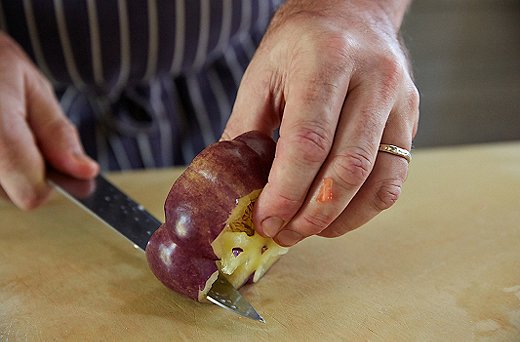
For the peppers, first saw off the top and bottom (those bits go into the purée bowl). Then cut it into thirds, horizontally, and cut open each third so that it’s no longer a continuous circle.
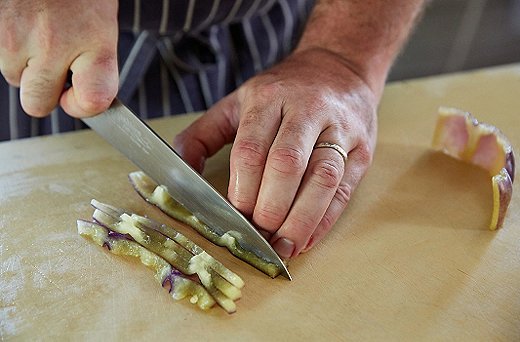
Flatten the opened circle, and cut the pepper lengthwise into quarter-inch slices. Then turn and dice to get your quarter-inch cube.
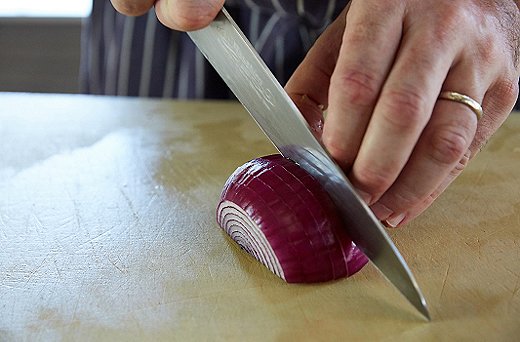
For the red onions, first throw out the skin, then put the end bits into the purée bowl. Next, with one end up, cut in half vertically. Slice as shown above, keeping your fingers curved inward.
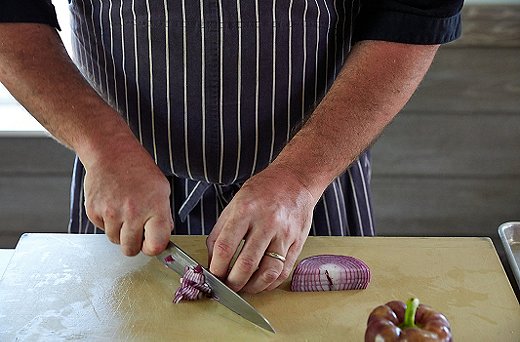
Turn each sliced onion piece flat down on board, and dice, moving the knife in a circle around the curve of the onion.
A word from Greg on knives: “The most critical thing about a knife is that it’s sharp. Until you’re ready to take the time and sharpen them up, use cheap knives. Once you can’t get an edge, throw it out. The essential knife lineup to have on hand is a chef’s knife, a paring knife, and a serrated knife for things like slicing tomatoes and bread.”
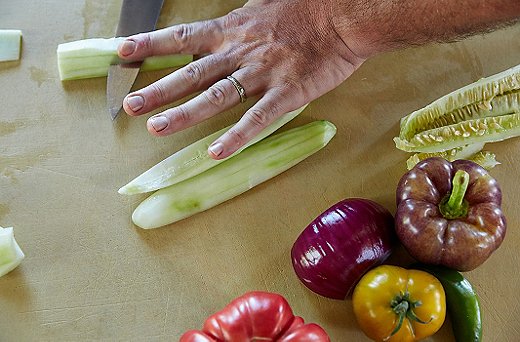
The majority of the cucumber, especially if it has seeds, will end up in the purée. First, peel the cucumbers, then quarter them lengthwise, and core; put the core and seeds in a strainer on top of the purée mixture and add some salt to draw out more liquid. That gives you a flat side, making it easier to dice.
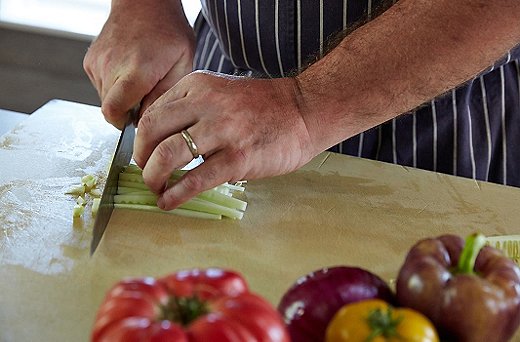
Slice the cucumbers lengthwise into quarter-inch strips, then turn and dice into quarter-inch cubes.
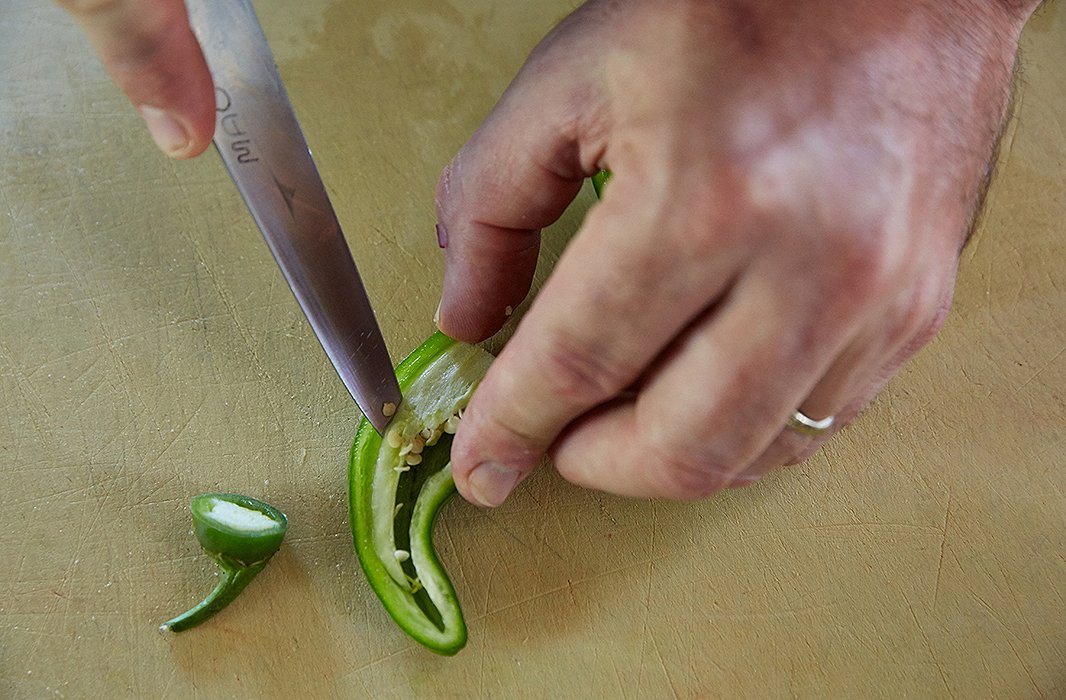
The hot peppers receive special treatment: They get cut into 1/8-inch cubes rather than quarter-inch. The French term for this teensy cut is a brunoise. Of the hot peppers’ role, Greg explains, “You’re looking for the vegetable flavor in these, not the heat,” so take out the heat-carrying seeds.
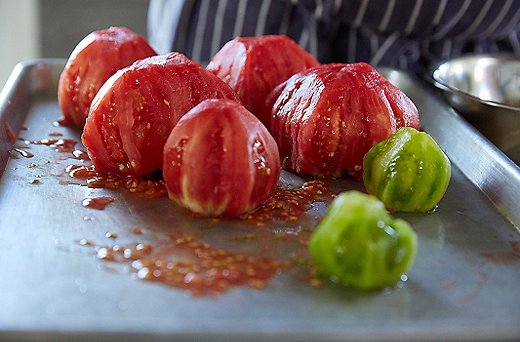
Core the tomatoes (again, cores go into the purée), then put them in boiling water for 10 seconds. Take them out, let them cool, and gently peel by hand.
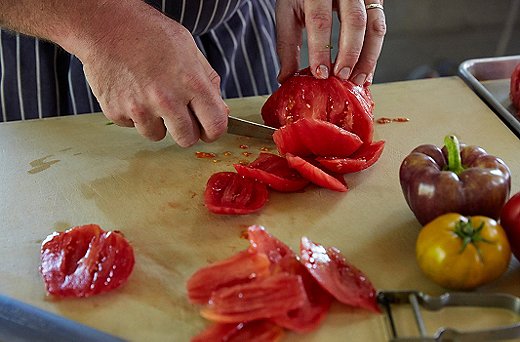
Cut “petals” around the peeled tomatos—this will become what you slice and dice into quarter-inch cubes. The remaining seeds and juice all go into the purée.
A word on tomatoes, which Greg calls “the body of this soup”: Have fun buying lots of heirlooms for this recipe. Heirlooms are not grown to be shipped, so they are always ready to eat immediately. Greg loves too many to count but mentions some favorites, all of which have great names: the Brandywine, the Paul Robeson, the Mortgage Lifter, the Purple Cherokee, and the Green Zebra.
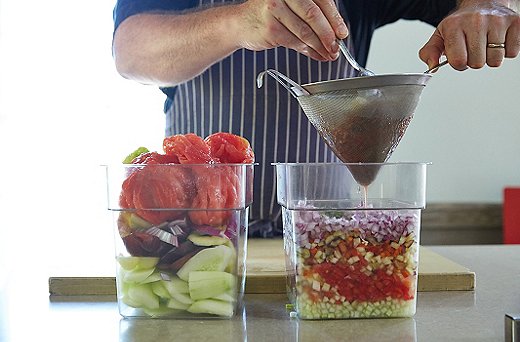
Greg calls this result “a nonscientific balance between stuff to purée and diced vegetables.” As long as you get parts from each vegetable into the purée bowl, the flavors will be fully mixed.
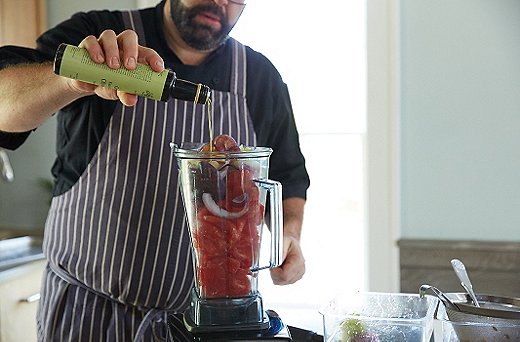
Add the purée bowl’s contents into the Vitamix along with a stream of olive oil. Blend thoroughly into a true purée, then pour the contents onto the diced vegetables (you may need a larger bowl to combine both).

The gazpacho in its element: on a picnic table with natural linens. A glass of rosé has to be nearby.

Soups are one of the last great peasant foods. They just make everyone superhappy.
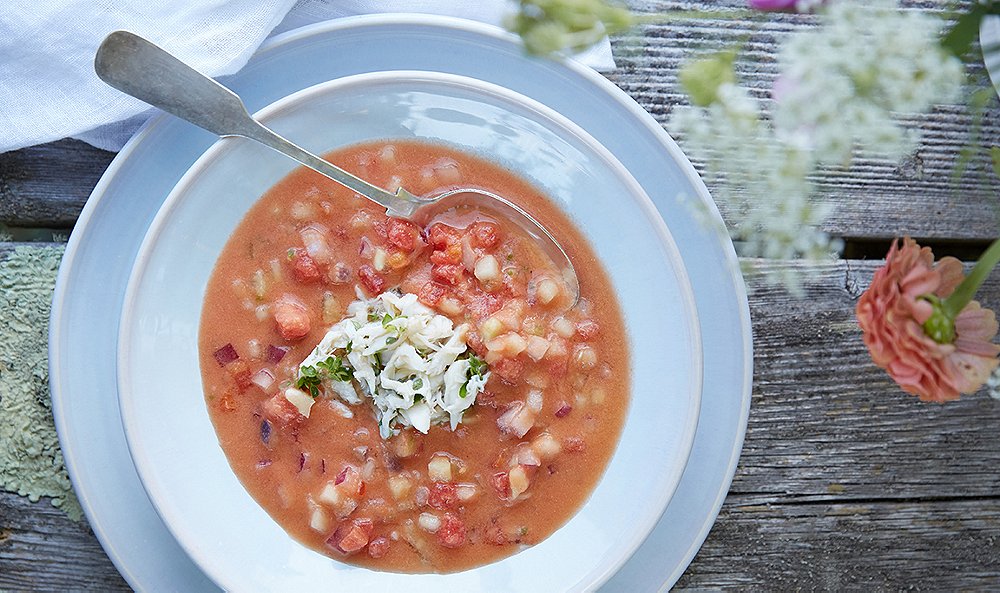
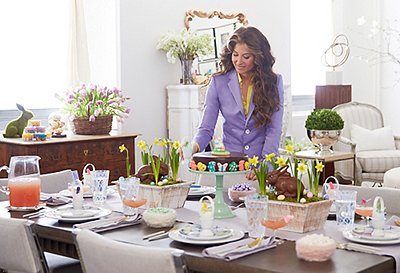
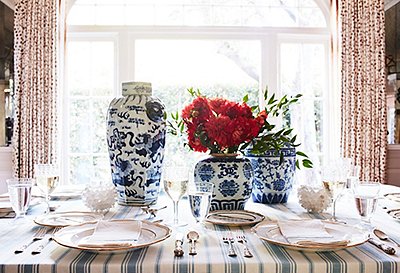
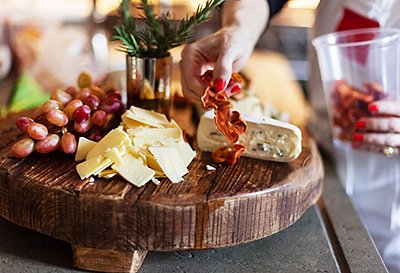
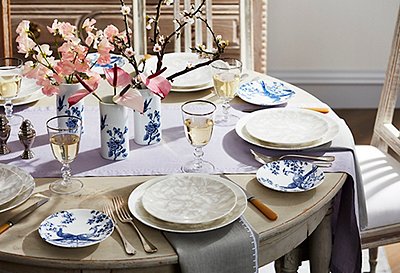

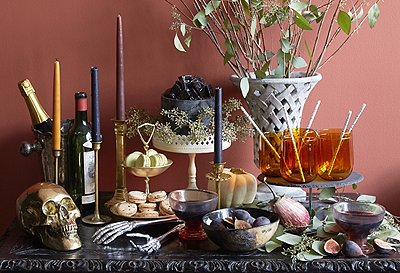
Join the Discussion